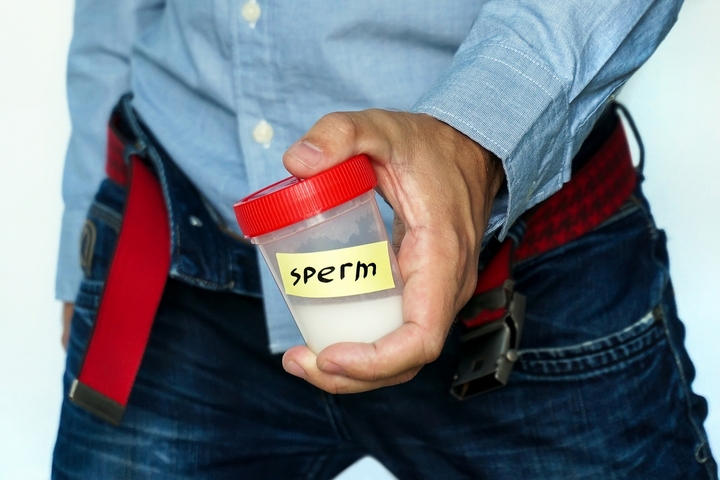Being infertile does not mean you cannot conceive or sire a child.
There are a host of fertility treatments that could have you holding a brand new baby in months. These ranges from surgical to making lifestyle changes and a host of other options in between. Below are various types of fertility treatments a doctor could recommend for you.
1. Surgery

For men, surgery may be one of the more recommended types of fertility treatments. This usually occurs when the cause of infertility is varicoele. This is a situation where the scrotum veins are wide or the tubes that carry sperm (vas deferens) are blocked. Surgery can also be done to reverse vasectomies. Where there are no sperms in the ejaculate, there is a special procedure to retrieve it directly from the epididymis or testicles.
Infertility in women can be treated surgically to increase chances of conception. Options for surgical treatment of infertility in women include hysteroscopy and laparoscopy. Hysteroscopy is performed to remove uterine growths such as small fibroids and polyps.
During this procedure, the uterus is examined for anything that could be causing infertility. Laparoscopic surgery involves the use of a telescopic camera to scan a woman’s reproductive system for potential defects. Any suspicious growth is biopsied and repaired using this minimally invasive procedure.
2. Antibiotics

After examining you and carrying out several tests, your physician may recommend antibiotics as the perfect treatment for any infections found in your reproductive organs. Antibiotics can be used to treat both female and male-related infertility attributed to infections in the reproductive organs.
3. Medication

Medications for infertility are aimed at stimulating ovulation, helping with erection and ejaculation, suppressing or controlling a woman’s menstrual cycle, and treating other infertility related conditions.
Such medications are meant to treat underlying medical conditions that could be affecting your fertility. These medications can be used alone or together with other treatments such as surgical interventions, IVF treatment, or intrauterine insemination (IUI).
4. Counselling

Tests on a good number of men who seek infertility treatment show they have nothing to worry about. Their reproductive organs are in perfect health. Essentially, they should be able to conceive. Treatment for such people involves counselling them and encouraging them to relax and keep trying.
5. The Squeeze

If it is a case of premature ejaculation, the squeeze technique is very effective. It involves stimulating a man until he is close to ejaculation. The partner then squeezes his frenulum before starting the process again. This goes on for some time until the penis is desensitized to allow longer intercourse sessions.
Another type of fertility treatment for premature ejaculation involves collecting the ejaculate and artificially fertilizing the egg.
6. Hormones Treatment for Men

For men, there are drugs for treating pituitary and hormonal imbalances. These include clomiphene citrate that stimulates the hypothalamus so it can regularly release GnRH and restore fertility. Where the pituitary is not producing the required sex hormones, to restore fertility, you will need to undergo hormone replacement therapy.
To increase LH supply and encourage your testes to produce sperm and testosterone, hCG (human chorionic gonadotropin) injections are recommended. Where hCG fails to work, Pergonal, a drug that combines LH and FSH, is quite effective in stimulating sperm production. Other hormones treatment drugs for men include Parlodel (bromocriptine), and cortisone replacement therapy, which lowers androgen levels and allows the normal function of the pituitary to restore fertility.
It takes about four months for hormone replacement therapy to work. Hormones treatment and fertility drugs for women involve helping them ovulate and restore the right levels or hormones.
7. Assisted Reproductive Technology (ART)

This is another type of fertility treatment for men and women. ART types include IUI (intrauterine insemination), which involves collecting sperm and directly inserting it inside a woman’s uterus when she is ovulating. Another type of ART treatment is in vitro fertilization, also known as IVF.
During IVF, the sperm and egg are harvested and mixed together in a lab. After fertilization, the egg is allowed to grow for three to five days under lab conditions before the embryo is planted in a woman’s uterus. There are two other popular types of ART treatments you should know about.
One is the gamete intrafallopian transfer (GIFT) and involves placing the egg and sperm in the fallopian tube. The other is called zygote intrafallopian transfer (ZIFT) and involves collecting the egg and sperm and bringing them together in a lab where the fertilized egg is quickly transferred into the fallopian tube at 24 hours.
Most fertility conditions are treatable. You don’t have to resign to fate under the false belief your condition cannot be treated. Treatment options include surgical procedures that are almost non-invasive, taking antibiotics, drugs, hormones treatment, counselling and a range of ART procedures that are highly effective in restoring fertility and facilitating conception. With such a wide range of treatment options for infertility, there is no reason you should not try for a baby.
